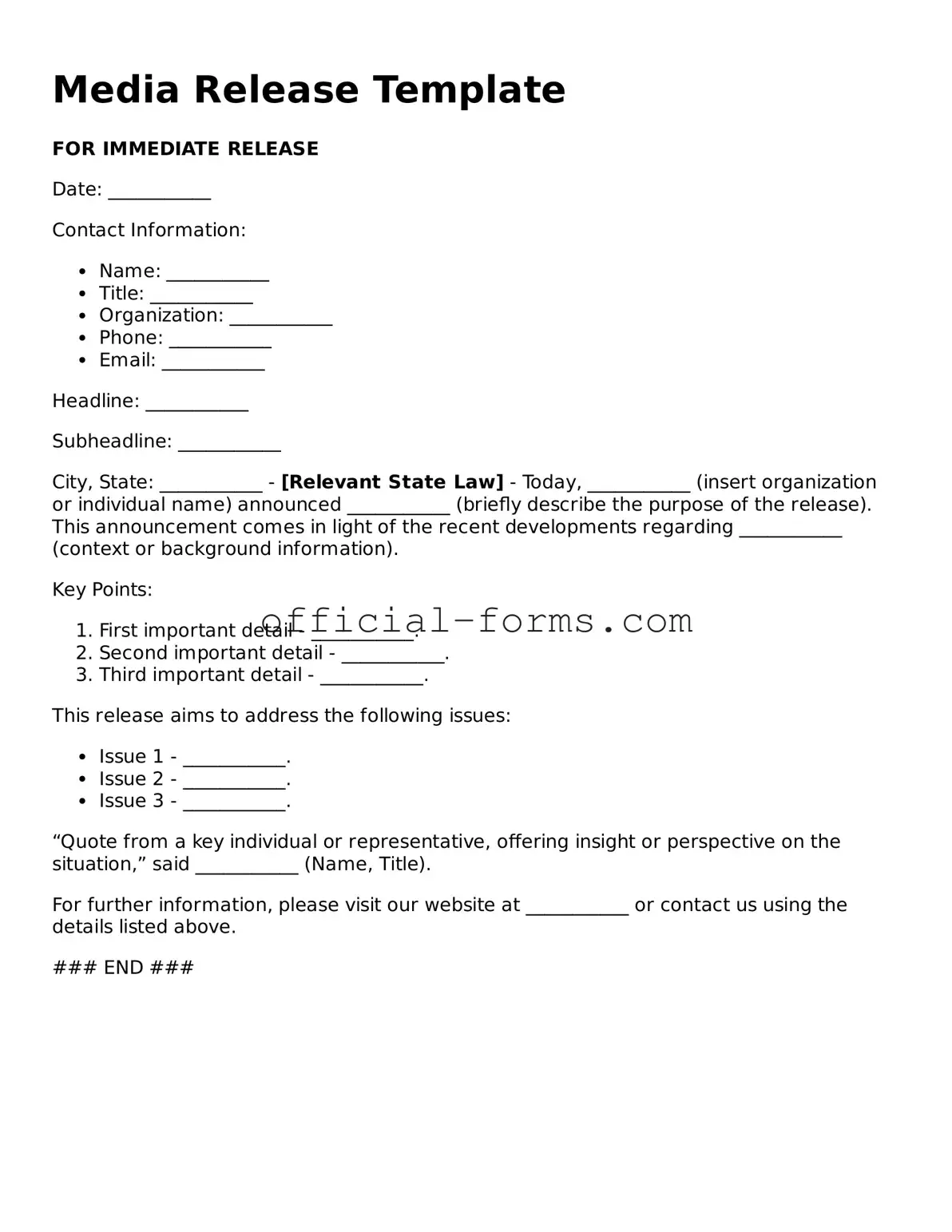Filling out a Media Release form is an important step for individuals or organizations seeking to share their image, voice, or content with the public. However, several common mistakes can hinder the effectiveness of the release and lead to misunderstandings or legal complications. Awareness of these pitfalls can help ensure that the form is completed accurately and comprehensively.
One frequent error is failing to provide complete contact information. This detail is crucial for media representatives who may need to follow up with questions or clarifications. Omitting a phone number or email address can create barriers in communication, potentially leading to missed opportunities.
Another common mistake is not specifying the intended use of the media. Individuals often overlook the importance of detailing how their image or content will be used. Without this information, it can be unclear to both parties what the expectations are, which may lead to disputes later on.
Some people neglect to read the entire form carefully. Skimming through the document can result in missing important clauses or requirements. Understanding every section is vital to ensure that all conditions are acceptable and that the individual is fully aware of their rights and responsibilities.
In addition, not providing a clear description of the media being released can lead to confusion. Whether it's a photograph, video, or audio recording, specifying what is being released helps to avoid ambiguity. This clarity protects both the individual and the organization utilizing the media.
Another mistake occurs when individuals fail to sign and date the form. A Media Release is not valid without a signature, as it indicates consent. Forgetting this step can render the entire release void, nullifying any agreements made.
People sometimes make the error of not considering the implications of the release. It's essential to think about the long-term effects of granting permission for media use. Individuals should reflect on how the media might be perceived in the future and whether they are comfortable with that potential exposure.
Furthermore, using vague language can lead to misunderstandings. Phrases that lack specificity can create loopholes, leaving room for interpretation that may not align with the individual's intentions. Clear and precise language is key to a successful Media Release.
Another oversight involves not consulting with legal counsel when necessary. While many people may feel confident completing the form on their own, seeking professional advice can provide additional assurance that all aspects are addressed properly. Legal experts can help clarify any complex terms or conditions that may arise.
Lastly, neglecting to keep a copy of the signed release is a common mistake. Retaining a copy ensures that individuals have a record of what they agreed to, which can be invaluable in case any questions or issues arise in the future. Documentation is key in maintaining transparency and accountability.
